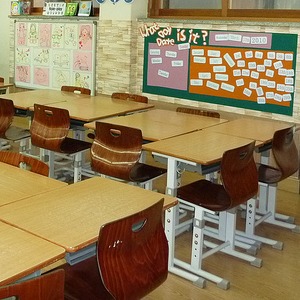Face the Facts: Limited-English Students Test Public Schools

 By Raisa Camargo, Voxxi
By Raisa Camargo, Voxxi
Limited-English students outnumbering teachers
That means there’s just one ESL instructor for every 150 ESL students. The standard classroom ratio across America is one teacher for every 15 students. That’s ten times the national average of the public school classroom student to teacher ratio.
 The number of ESL students is projected to increase even more into the next decade as more immigrants arrive in the United States. In the past decade, the number of public school students who don’t speak English has grown to more than a million. According to Face the Facts, that leads to a crowded classroom spoken in different dialects. Students who can’t converse in English are also at risk of falling behind their classmates.
The number of ESL students is projected to increase even more into the next decade as more immigrants arrive in the United States. In the past decade, the number of public school students who don’t speak English has grown to more than a million. According to Face the Facts, that leads to a crowded classroom spoken in different dialects. Students who can’t converse in English are also at risk of falling behind their classmates.
In a 2011 study on reading and math scores for grades 8 and 4, the National Assessment for Educational Progress pointed to the achievement gap in math and reading between non-limited english speaking Hispanic students and Whites. They saw improvement for Hispanic students who are English proficient in terms of the achievement gap.
The study indicates that in 2009, the 15-point reading gap between grade 4 White and Hispanic students was narrower than the 24-point gap in 1998.
Yet, when compared to Hispanic students, who are English Language Learners, the gap was statistically significant. In 2009 there was a 29-point gap between limited-english Hispanic students and non-english language learner Hispanic students on reading scores in grade four. For grade 8, the gap stretched to 39 points, according to NAEP.
Advocates for bilingual education have argued that there isn’t enough attention being paid to students in ESL classes or courses that would promote dual language programs.
In a previous interview with VOXXI, Jim Lyons, former staff member of the U.S. Commission on Civil Rights, who served in the Department of Education under President Jimmy Carter, explained that there is local support for bilingual education. He cited that part of the interest in dual language programs stems from the body of neuroscience evidence that suggests bilingualism and multilingualism improves brain function, cognitive ability, learning, and student achievement test scores.
This article was first published in Voxxi.
Raisa Camargo is a staff writer at Voxxi.
[Photo by knittymarie]
